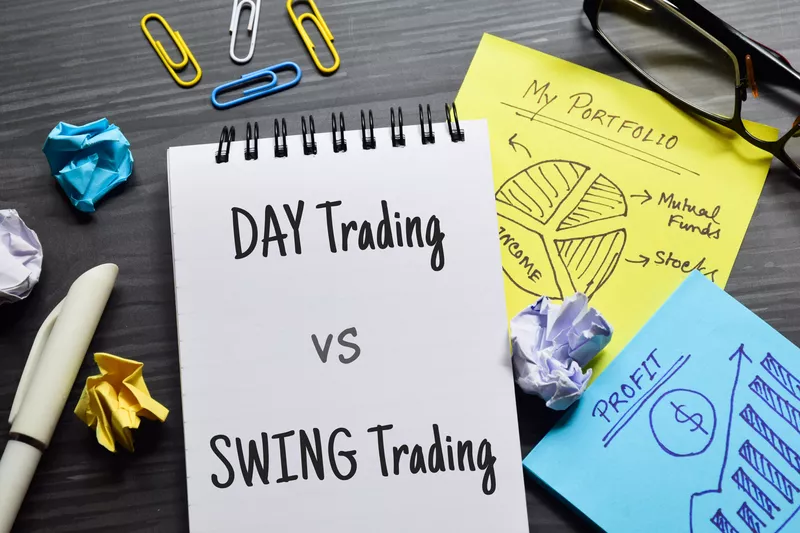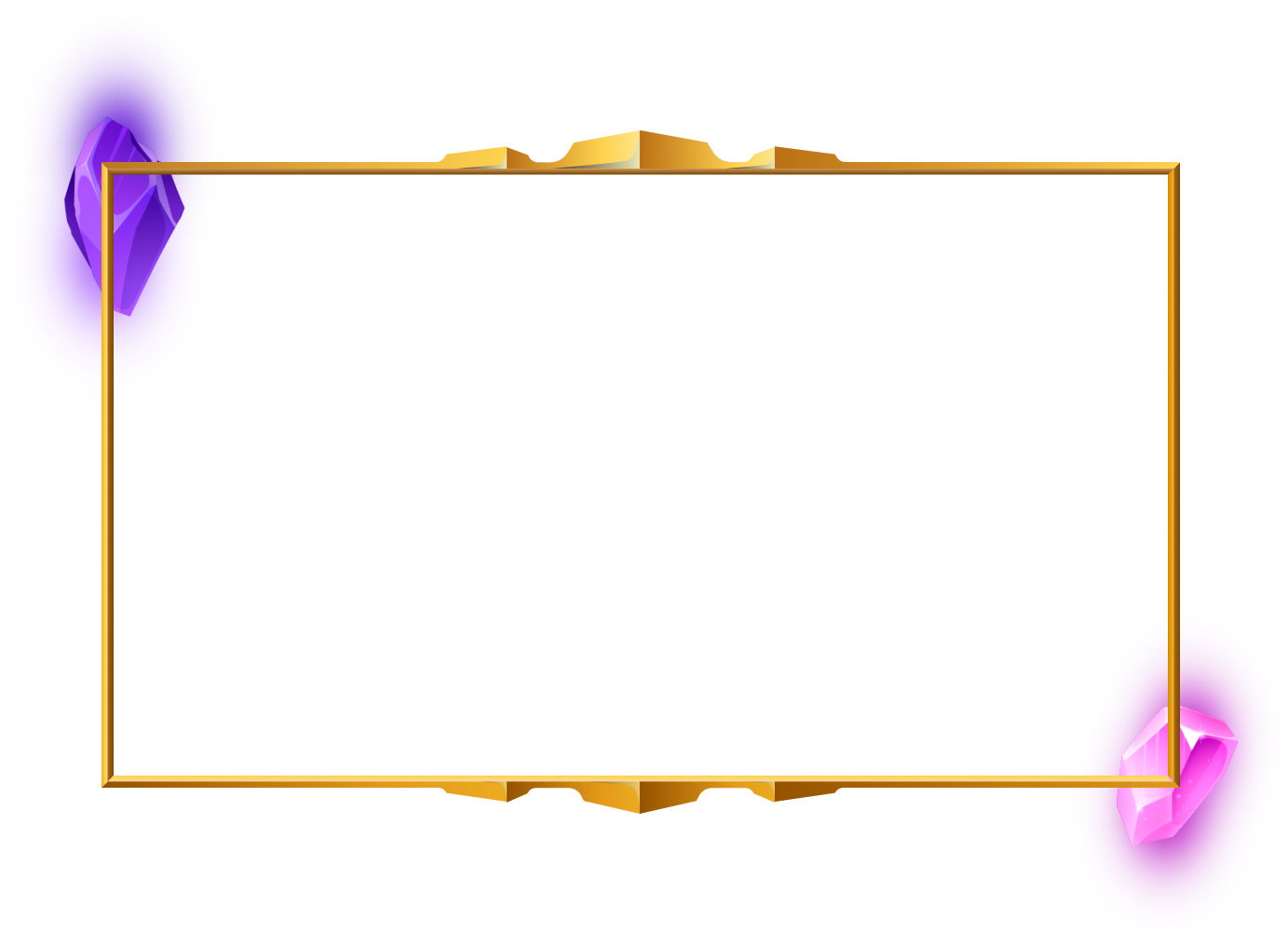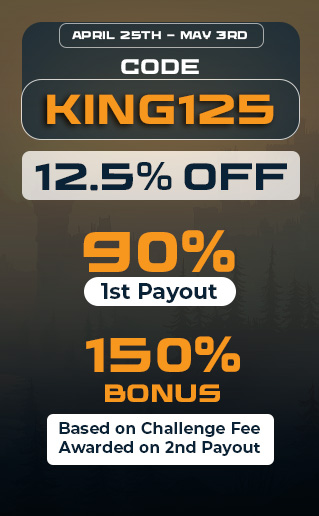Individual traders take vastly different approaches to trading. Some prefer the high intensity of scalping, while others like low-pressure strategies, such as swing trading. It’s critical to find the one that works best for you. In this article, we’ll compare two strategies: swing trading vs day trading.

Each strategy has its strengths and weaknesses, and they both offer opportunities for profit. But ultimately, their success depends on the specific goals, risk management, and experience of a trader. Let’s explore the differences.
What Is Swing Trading and How Does It Work?
Simply put, swing trading means taking advantage of short- to medium-term price swings. Swing traders hold their positions for several days or weeks, depending on the strength of a trend. Here’s how swing trading works:
Identify the Trend
Identifying a market trend is essential to understand whether to go long or short (i.e., buy or sell an asset). When it comes to swing trading vs day trading, swing traders look at daily or weekly trends, while day traders act on 15-minute or one-hour trends. Swing traders buy in an uptrend and consider selling in downtrends.
To identify a trend, look at the historical price data. Use the Moving Average Convergence Divergence (MACD) indicator to smooth out price data over shorter-term and longer-term periods. When the MACD line crosses above the signal line (a nine-day exponential moving average of the MACD line), it generates a bullish (uptrend) signal. But when it crosses below, it means the market is bearish (downtrend).
Confirm the Trend
First, analyze key support (floor price) and resistance (ceiling price) levels. When a pair breaks through these levels, you’ll know that a trend may be starting. But it could also be a false signal or market manipulation done by institutional traders. To confirm if the trend is strong, use technical indicators like the Relative Strength Index (RSI) and the Average Directional Index (ADX).
You should also analyze the trading volume to determine the trend’s strength. An increase in trading volume means a lot of traders are interested in the trend. This confirms that the price is about to rally.
Plan Entry and Exit Points
Enter the trade when an asset breaks above the resistance line. Or take a short position if the price falls below the support line. Pro tip: Use trailing stops to lock in profits if the price is moving in your favor.

What Is Day Trading and How Does It Work?
Day traders open and close positions on the same day. Their trades could be as short as 30 seconds to a few minutes. This style of day trading is called scalping, where traders capitalize on the short-term volatility on the price charts.
Here’s what it takes to be a day trader:
Pre-Market Preparation
Every trader must start their day by researching the market. Read up on the basics of the currency pair and track economic news, events, and budget announcements. The market review will prepare you for all the events that may impact the charts.
Next, do a technical analysis. This involves looking at the historical price data and volume to anticipate future price movements. Technical analysis can be done using several indicators, such as Moving Averages, RSI, Bollinger Bands, Ichimoku Cloud, and MACD. These indicators will help you make swift decisions based on historical and real-time data.
Real-Time Monitoring
When we compare swing trading vs day trading, day trading is more fast-paced. To succeed, you must stay alert to market movements. Once the trading day begins, day traders usually monitor their screens continuously to look for patterns, trends, and trading signals. It requires a lot of patience to wait for a suitable setup in line with your trading strategy.
Risk Management
Since day trading is quite swift, traders prefer to make numerous trades in a single session. But be careful not to overtrade or trade too aggressively in the beginning. A good risk management strategy means setting stop-loss orders and not risking more than 1–2% of your capital on each trade.
Swing Trading vs Day Trading: Pros and Cons
Swing trading and day trading offer similar opportunities for profit. But they each have their own benefits and drawbacks.
Swing Trading Pros:
- It requires less time commitment than day trading. It’s also more flexible, so traders can manage positions around their schedules.
- This strategy is suitable for part-time traders.
- It’s less stressful and doesn’t require you to monitor charts constantly.
- You can generate potentially large profits by keeping positions open in long-term trends.
- Swing traders see lower transaction costs in terms of commissions and spreads because they take fewer trades.
Swing Trading Cons:
- The biggest risk is overnight exposure. Holding positions for longer leads to market gaps caused by news events.
- Your profit frequency will be low, as you would take fewer trades than day traders.
Day Trading Pros:
- You can make quick profits as a day trader.
- There are no overnight risks and costs.
- Day traders get multiple trading opportunities in a single session.
Day Trading Cons:
- It’s high-stress and intense because traders must make quick decisions under pressure.
- Day trading is time-consuming. It requires a full-time commitment during market hours.
- Your transaction costs may be higher due to taking frequent trades.
- Because they open and close positions quickly, day trades make small profits. But with consistency, these small profits can add up.
- The desire for quick profits can lead to overtrading and increase the exposure to risk.
Trading Strategy: How To Combine Swing Trading and Day Trading
Swing trading and day trading together can be a powerful strategy. You can use the strengths of both approaches. Swing traders look for the overall trend, but day traders look for micro trends. Using a combination of both can help you place precise entry and exit points. Monitor intraday price volatility to identify entry opportunities that align with the broader trend.
Sometimes, the market can become range-bound. This means there’s no clear trend, so swing traders may not see a profit soon. If you’re holding a swing trade position for the long term, you can supplement your trading with scalping to generate quick profits. This option also helps diversify your trades to spread the risk.
These are some ways to combine both strategies and take advantage of both short- and long-term market movements. But no matter your strategy, take a disciplined approach and follow your risk management practices.
Trade Your Strategy With The Funded Trader
When choosing between swing trading vs day trading, pick a strategy that aligns with your trading goal. If you’re a beginner, then swing trading is a better option because it’s less intensive. Make sure you have a good risk management strategy in place.
Once you master your strategy, then the sky’s the limit for generating profits as a funded trader. In fact, many of our traders generate profit with swing trading. Join The Funded Trader Challenge to become a funded trader today.


























